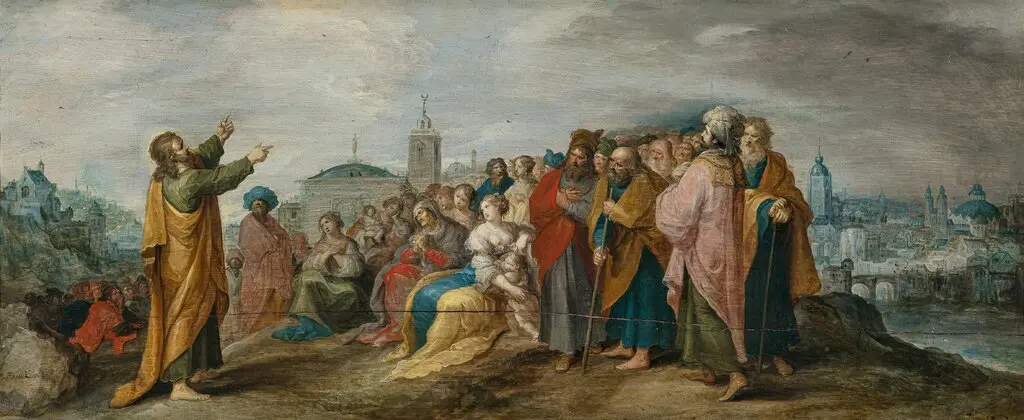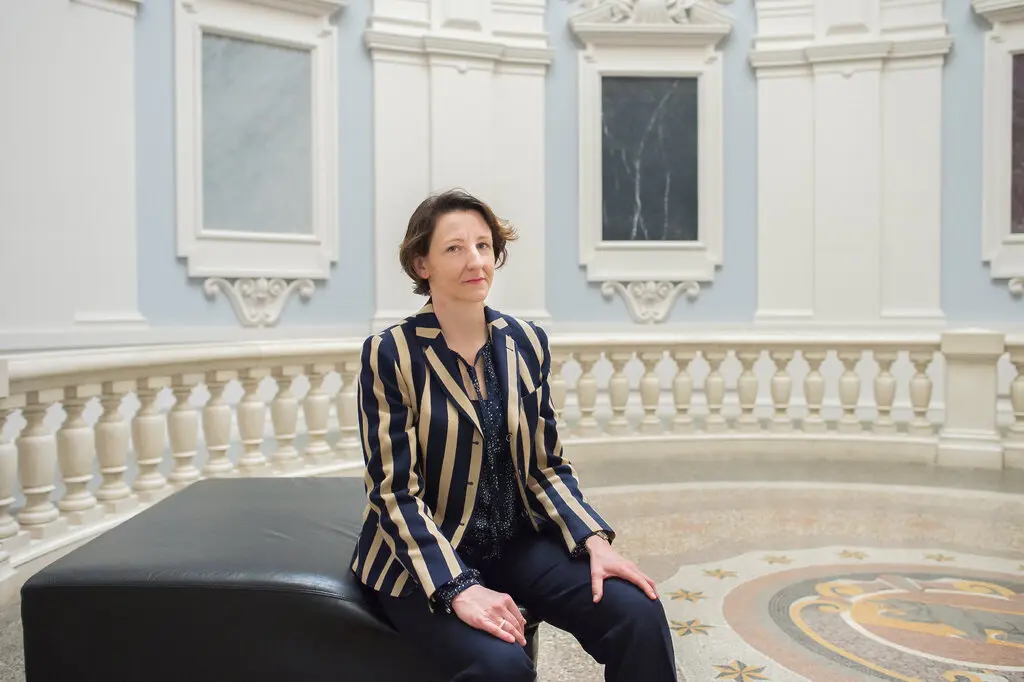News:
A Painting Looted at Least Once, From Hitler, Is on the Block
By Catherine Hickley
Some experts believe this 17th-century work now up for sale was originally stolen by the Nazis, but no clues to its prewar owner have turned up in years of searching.
“Sermon on the Mount,” by Frans Francken the Younger, a painting once stolen from Hitler, is scheduled to be sold at auction later this month
It has become a familiar scenario in the art world: the heirs of a Jewish collector spot a painting in an auction catalog that was stolen from their relative in the Nazi era. They contact the auction house and, if all goes well, reach a settlement with the seller that ensures they receive a share of the revenue from the sale.
But what happens when the rightful heirs to art probably looted by the Nazis cannot be identified, let alone located? A work by the Antwerp painter Frans Francken the Younger that the Munich auction house Neumeister is offering on Sept. 21 raises exactly that question.
Painted in the early 17th century, “Sermon on the Mount,” shows Christ, under cloudy skies, speaking to a huddle of people of all ages who are listening intently. The current owner brought it to Neumeister for sale nine years ago. It is known to have been stolen at least once — from Adolf Hitler, a known beneficiary of Nazi looting.
But after years of research, scholars have drawn a blank on the identity of the prewar owner.
“We are in a quandary,” said Katrin Stoll, the owner and manager of the auction house.
Provenance research, which tracks the ownership history of artworks, has developed apace over the past 20 years as online databases have proliferated, access to archives has improved and the number of scholars engaged in the field has grown. Restitutions of Nazi-looted art by museums have become routine. Companies such as Mondex Corporation have made a business out of tracing the heirs of looted art and offering to recover works in return for a share of the value.
But researchers can still reach an impasse in investigating the provenance of an artwork, Nikola Doll, a researcher at the Bern Kunstmuseum in Switzerland, said.
“It can be very difficult to trace heirs in the context of the Holocaust,” she said. “Sometimes the direct heirs did not survive, and the legal heirs are more distant relatives who are scattered around the world. They often have no knowledge of their forebears’ possessions. It can even be the case that no heirs can be found.”
And not all dealers are willing to share their records, Doll said. “We would wish for more cooperation from the art market,” she said. “Some dealers won’t open their archives for provenance researchers. Others charge money for access.”
Museums that hold artworks with unclarified ownership histories can continue to display them while conducting further research. The Kunstmuseum in Bern, where Doll works, received the tainted collection of Hildebrand Gurlitt, a known dealer in Nazi-looted art, as a bequest from his son, Cornelius Gurlitt, who died in 2014. German law enforcers seized more than 1200 works at the younger Gurlitt’s Munich apartment in 2012 and hundreds more were later found in his home in Salzburg, Austria.
A team of researchers has identified nine works in the collection as having been looted by the Nazis. A further 208 works have been cleared of all suspicion. The provenance of hundreds of others has so far not been fully clarified, even after 10 years of dedicated research, which is continuing.
“There are some sensible solutions if an artwork is in public hands,” Stoll said. “We have no instruments for dealing with artworks in private hands.”
In the case of “Sermon on the Mount,” the painting is known to have been purchased by Hildebrand Gurlitt in occupied France in 1943, via a middleman with whom he frequently did business. The identity of the seller is unknown.
But this painting did not end up in a Gurlitt home. It was instead selected as being worthy of display in the Führermuseum that Hitler hoped to build in Linz, Austria.
Toward the end of the war, the oil-on-wood painting was stored in Munich alongside some 1,500 artworks also destined for that museum. They were kept in the Führerbau, or Führer’s building, and the adjacent Nazi headquarters. Hundreds of them have since been discovered to have been stolen from Jewish collectors.
But in the chaotic last days of the war, desperate Munich residents looted the Führerbau over two days in April 1945. Some 700 artworks were stolen. Many were recovered in the weeks after the plunder, but about 400 remained lost — among them, “Sermon on the Mount.”
“There are a number of compelling red flags in the provenance of this painting,” said Stephan Klingen, an art historian at the Central Institute for Art History in Munich who has been investigating this painting’s origins for years. “But we don’t know whether it was looted by the Nazis — it might have just been regular business for Gurlitt in France. The provenance research has so far been inconclusive, but of course more could emerge at a later stage from sources in France.”
The painting did not turn up again until 2009 when it appeared on German television’s equivalent of “Antiques Roadshow.” Klingen identified it as a work stolen from Hitler’s Linz collection. He alerted the police, who seized the painting.
As the legal successor to the Nazi regime, the German government tried to claim the work. But a court returned it to the last holders of the painting, the family of the caretaker of a German army barracks who had lived in Munich in 1945. The court ruled that the family did not know it had been stolen, had acquired it in good faith through inheritance, and was therefore entitled to possess it under German law. Family members said they didn’t know where the caretaker had gotten it.

Provenance expert Nikola Doll, who has been involved in researching the Gurlitt collection at Kunstmuseum Bern
The painting is now in possession of a relative of the caretaker who was willing, her lawyer said, to reach a settlement with the heirs of the prewar owner if it turned out the painting had been looted. The relative, an older woman, has lent “Sermon on the Mount” to two museum exhibitions dealing with Gurlitt’s legacy, in part in the hope that someone would claim it. She has also waited nine years while researchers investigated its provenance.
But she is not willing to wait indefinitely for a claim that may never materialize, said her lawyer, Patrick Rosenow.
“She is over 80, she has moved into a home for the elderly,” Rosenow said. “She doesn’t want this problem transferred to her sons — she wants it resolved.”
Provenance research can be expensive, with no guaranteed results. Few private art owners have the resources to pursue it indefinitely. Stoll at Neumeister said she had hoped the German government would step in to buy “Sermon on the Mount” and fund continued research.
“The political establishment has disappointed me,” she said.
“I see the government in Berlin as responsible, as the successor to the Nazi regime,” she said, adding that the auction house has “stored it, insured it and researched it. They cannot expect us to do all this privately.”
A representative of the German government did not immediately respond to a request for comment.
Meike Hopp, a professor of provenance research at Berlin’s Technical University, said she thought there was no issue with a private holder of the work selling it after so many years of research. But, she said, it would be good if a state institution or art fund could buy it now.
https://www.nytimes.com/2023/09/04/arts/design/a-painting-looted-at-least-once-from-hitler-is-on-the-block.html


